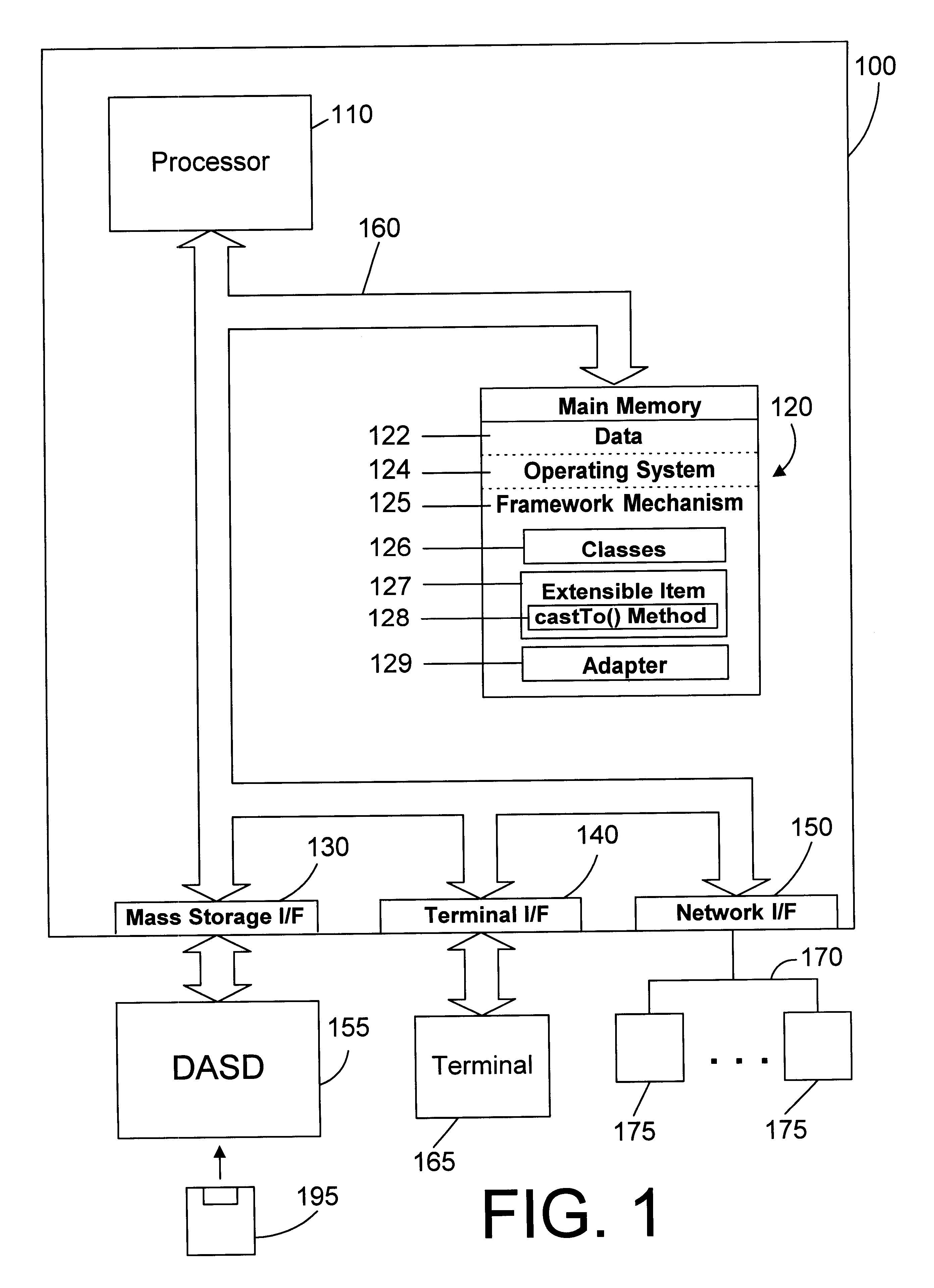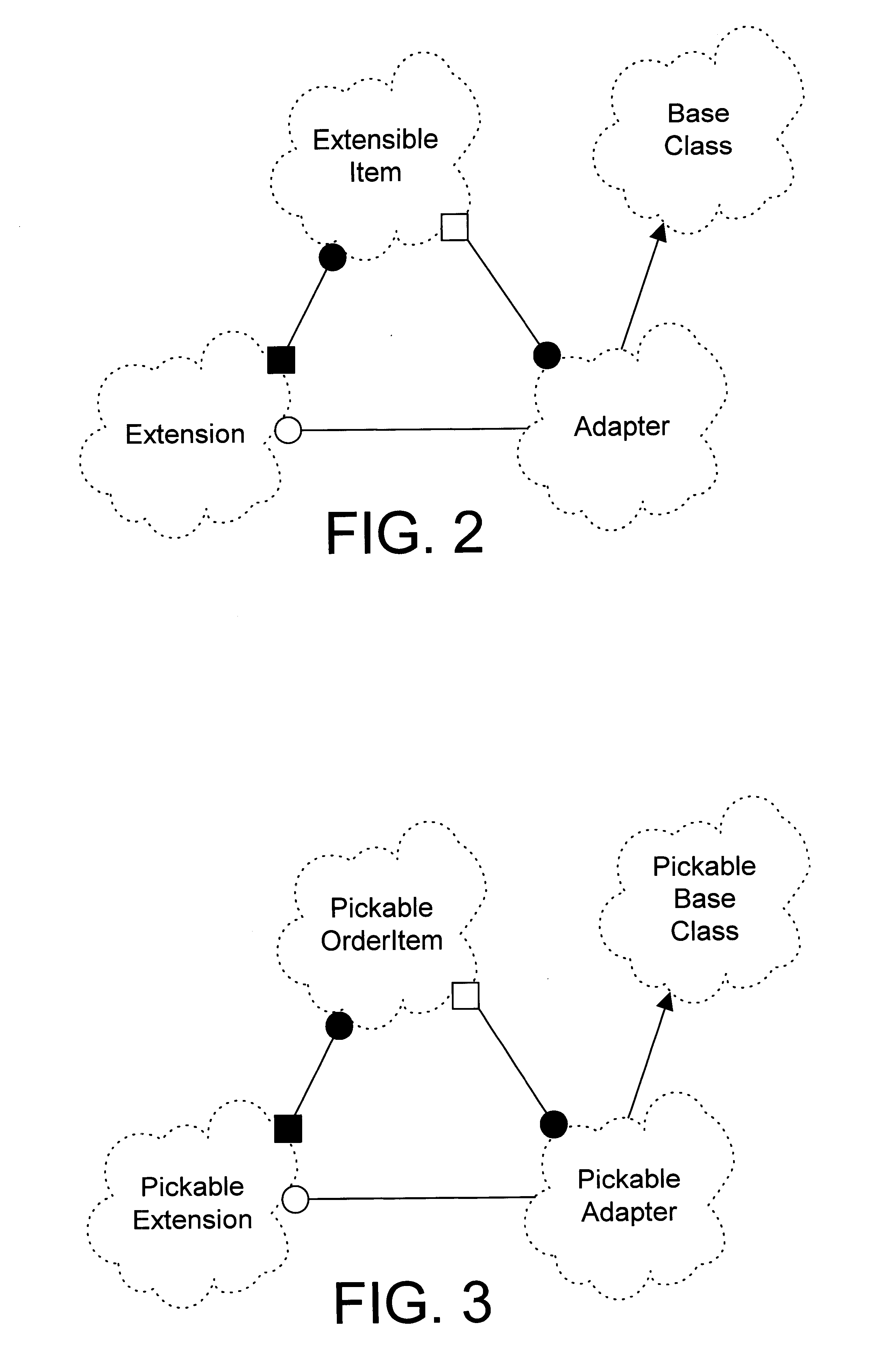Class casting support for run-time extensible items in an object oriented framework
a technology of object oriented framework and extensible items, applied in the field of object oriented programming, can solve the problems of increasing software development costs, increasing money, and extremely powerful application software programs designed for high-performance computer systems, and achieve the effect of enhancing extensible items
- Summary
- Abstract
- Description
- Claims
- Application Information
AI Technical Summary
Benefits of technology
Problems solved by technology
Method used
Image
Examples
Embodiment Construction
According to a preferred embodiment of the present invention, a mechanism and method provide for supporting class casting of extensible items in an object oriented framework when a selected method on a particular class needs to be invoked. The extensible item includes a castTo( ) method that is invoked when the extensible item needs to be cast to a particular class. In response to invoking the castTo( ) method on an extensible item, an adapter object that corresponds to the extensible item is returned, and the selected method is invoked on the adapter object. The specific operations that support class casting are performed "under the covers", which means that, from the user's perspective, invoking a castTo( ) method on a run-time extensible item is semantically similar to casting an instance of a Java or C++ class that was statically extended at compile time.
Referring to FIG. 1, a computer system 100 in accordance with the preferred embodiment is an enhanced IBM AS / 400 computer syst...
PUM
 Login to View More
Login to View More Abstract
Description
Claims
Application Information
 Login to View More
Login to View More - R&D
- Intellectual Property
- Life Sciences
- Materials
- Tech Scout
- Unparalleled Data Quality
- Higher Quality Content
- 60% Fewer Hallucinations
Browse by: Latest US Patents, China's latest patents, Technical Efficacy Thesaurus, Application Domain, Technology Topic, Popular Technical Reports.
© 2025 PatSnap. All rights reserved.Legal|Privacy policy|Modern Slavery Act Transparency Statement|Sitemap|About US| Contact US: help@patsnap.com



